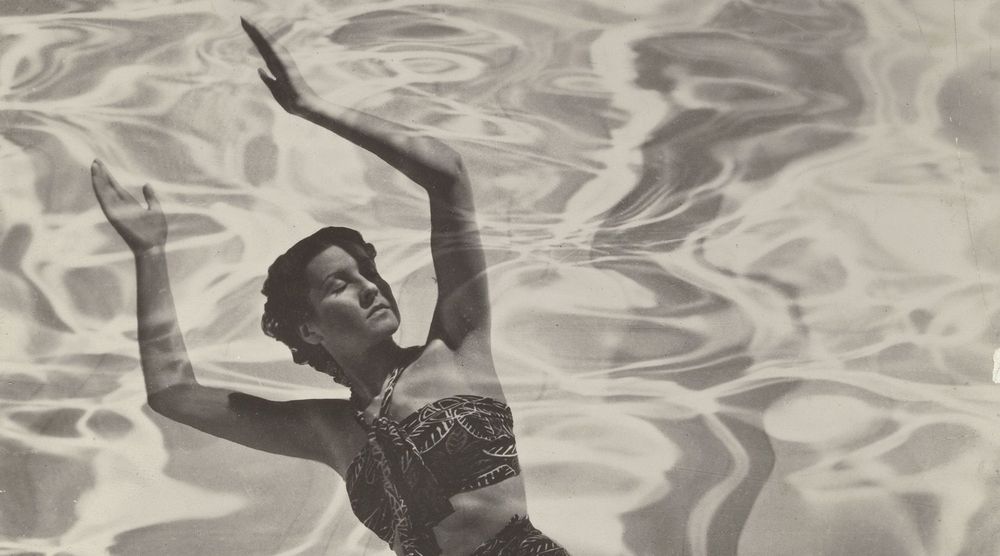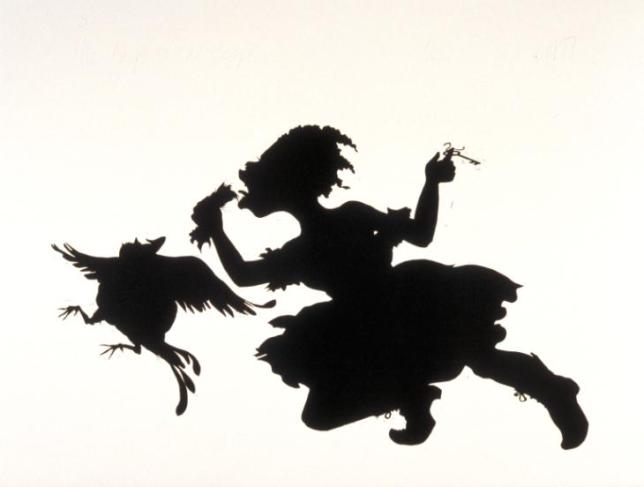
10 Artworks straight out of a dream
Since the publication of Freud’s Interpretation of Dreams in 1899, many have looked to this area in the hopes of finding meaning and purpose. Whether they be personal or societal, dreams can offer insight that is otherwise inaccessible during our waking lives. Perhaps this is why so many artists, especially in recent times, have turned to the dream world, exploring its departure from reality to return with greater truths.
#1 Dhatu, James Turrell (2009)

“I’ve always wanted to create the kind of light that exists in our dreams, reproducing the way light moves across them” shares James Turrell. The American installation artist has dedicated most of his life to this pursuit, playing with light and its fluctuation in all of his works. Throughout his studies, Turrell focused on art while also specializing in geology, astronomy, math and –last but not least– perceptual psychology. Drawing on each of these fields, a piece like Dhatu doesn’t only have a dream-inspired quality to it. It actually approximates, through scientific precision, a perceptual simulation of the dream state.
#2 The Victory, René Magritte (1939)

In evoking the unconscious, many questions emerge. For instance, why do we always rely on the image of an iceberg when the surrealists have offered us so many other visual interpretations? A camouflaged half-open door leading to the sea, as depicted in Magritte’s The Victory, could be an alternative for thinking of the subliminal. Divisions are blurred, as the sky becomes the sea and the ground becomes the door. In typical surrealist fashion, we cannot be quite sure of what is real and of where that reality turns into something else. It resembles the process of falling asleep at night, like the cloud drifting through the doorway. Why not do as Magritte does and claim victory by embracing the transitional!
#3 Photo: This Is the Color of My Dreams, Joan Miró (1925)

In this piece, Joan Miró questions the way we relate to art. He suggests that the painting is in fact a photograph. An already-disoriented viewer is now prepared to cross over to the other side of the canvas, where a small piece of dream awaits them. “This is the color of my dreams” Miró declares, finding a way to allude to the dream without ever actually portraying it. As a result, the light shade of blue takes on a symbolic role. It represents how the dream can function within art, and serve as a source of inspiration for artists and different art movements.
4. L’œil orangé, Arnaud Ele (2019)

Berlin-based photographer Arnaud Ele has always had a penchant for analog photography, shooting with film and disposable cameras since childhood. Ele’s use of light and contrast manipulates our perception, oftentimes creating a layered departure from our reality. The effect of this choice is mesmerizing, with a hazy, dream-like quality which is simultaneously conscious and intentional. With L’œil orangé, it becomes quite easy to enter into Arnaud Ele’s universe. As a result, we can see where images are used to express and experience “this semblance” of freedom.
5. Double Portrait with Hat, Dora Maar (1936-37)

Oftentimes overlooked as Picasso’s lover, Dora Maar has only recently been recognized as more of a pioneer than a muse. Photography –her chosen medium– eventually led to more complex photomontages like Double Portrait with Hat. By playing with the negative, Maar makes the otherwise reliable medium of photography into something more malleable and subjective. For example, she produces a doubling effect that comes eerily close to the experience of dreaming. Perhaps even of losing one’s mind. The “hat” that forms over the subject’s head could in fact represent that intimate space, most often referred to as interiority.
6. The Keys to the Coop, Kara Walker (1997)

As with all things, the good comes with the bad and Kara Walker is utterly aware of that fact. She portrays the silhouettes of cartoon-like characters to convey a much less playful reality. In this piece, a young girl runs after a chicken with keys in one hand and what appears to be the chicken’s head in the other. Often commenting on the persistence of racial stereotypes in American society, Walker finds a certain truth in the simplicity of the silhouette. In considering this print –which is the first of forty– one’s perspective evolves, reminded that there is a thin line separating dreams from nightmares.
#7 Narcissus Garden, Yayoi Kusama (1966)

With each of her installations, Japanese artist Yayoi Kusama gives the impression of endless space. Whether it be the Infinity Room or Narcissus Garden, these immersive experiences encourage self exploration, especially in relationship to our perception of limits. Whether they be real or imagined, limits inevitably determine our conscious behavior. But do they follow us into our dreams? With Narcissus Garden, Kusama recreates the limitlessness of our dreams with more than 800 mirrored orbs made of stainless steel. Each one offers the possibility of self-reflection, similarly to each of our dreams.
#8 The Dream, Henri Rousseau (1910)

Although Henri Rousseau never left France during his lifetime, his work often reflects tropical landscapes, such as the jungle. Rousseau looked for inspiration in his immediate surroundings, turning to Paris’s botanical gardens, illustrated books and stories from those who had been lucky enough to travel abroad. In The Dream, we see the meeting of these two worlds. That is to say, a woman reclining on a divan surrounded by exotic plants and sub saharan animals. Currently at MoMa, this artwork perfectly captures how art allows us to transcend the tangible and exceed our own experiences.
9. MIGRANTS, Picnic Across The Border, JR (2017)

With his large-scale projects, JR is able to manifest his dreams for the world, rather than wait patiently to see if they’ll happen and what form they’ll take. He offers a path for what could be with works such as MIGRANTS, Picnic across the border, presenting a potential future that would otherwise be indistinct and uncertain. His photograph straddles either side of the United States-Mexico border and functions as a meeting point, gathering people from both sides for a communal meal. As a result, this work is a testament to political dreams, and the importance of defending them if we hope to one day see them manifest outside of our own minds.
#10 DREAM TOGETHER, Yoko Ono (2020)

2020 has been a peculiar year for everyone, including artists. Nevertheless, creation often emerges from periods of pain and stagnation. Activist and artist Yoko Ono has offered powerful messages in the past, with the memorable “WAR IS OVER! If you want it. Happy Christmas from John & Yoko” billboard, referencing the Vietnam War. In the face of the global COVID-19 crisis, Yoko Ono has once again brought powerful words to the street, this time ornamenting the outside of the Metropolitan Museum in New York. With DREAM TOGETHER, we are reunited with Yoko Ono’s powerful philosophy, in which unity and hope prevail above all. In her own words: “A dream you dream alone is only a dream. A dream you dream together is reality.”
Dreams are powerful since they disrupt our sense of time and space. Artists have engaged with the subliminal in various ways, escaping the everyday limits of our reality to offer unlikely visions of the future. These representations have permeated art history, from biblical times to contemporary art, and continue to manifest in new and divergent ways.

About Artsper
Founded in 2013, Artsper is an online marketplace for contemporary art. Partnering with 1,800 professional art galleries around the world, it makes discovering and acquiring art accessible to all.
Learn more













